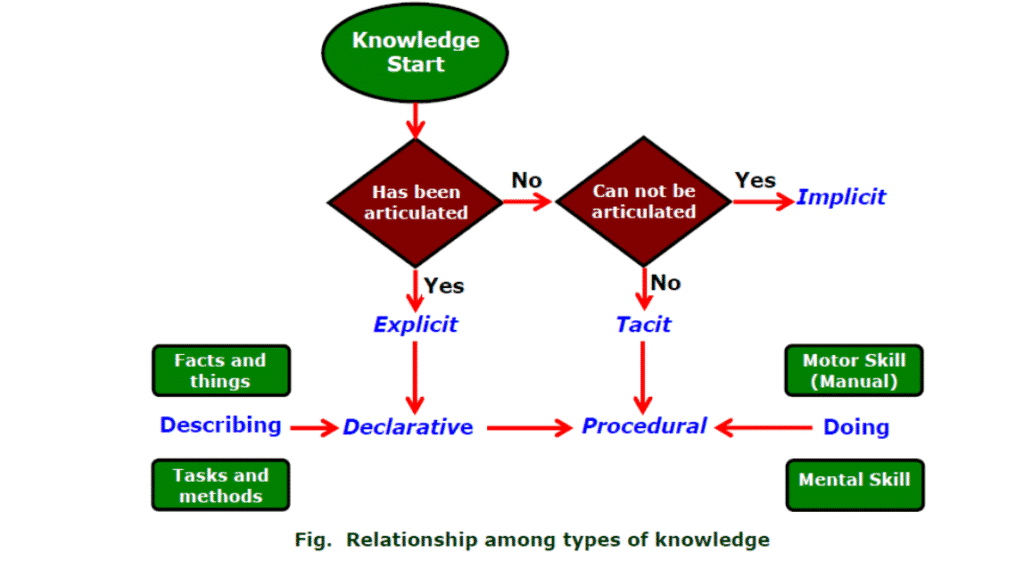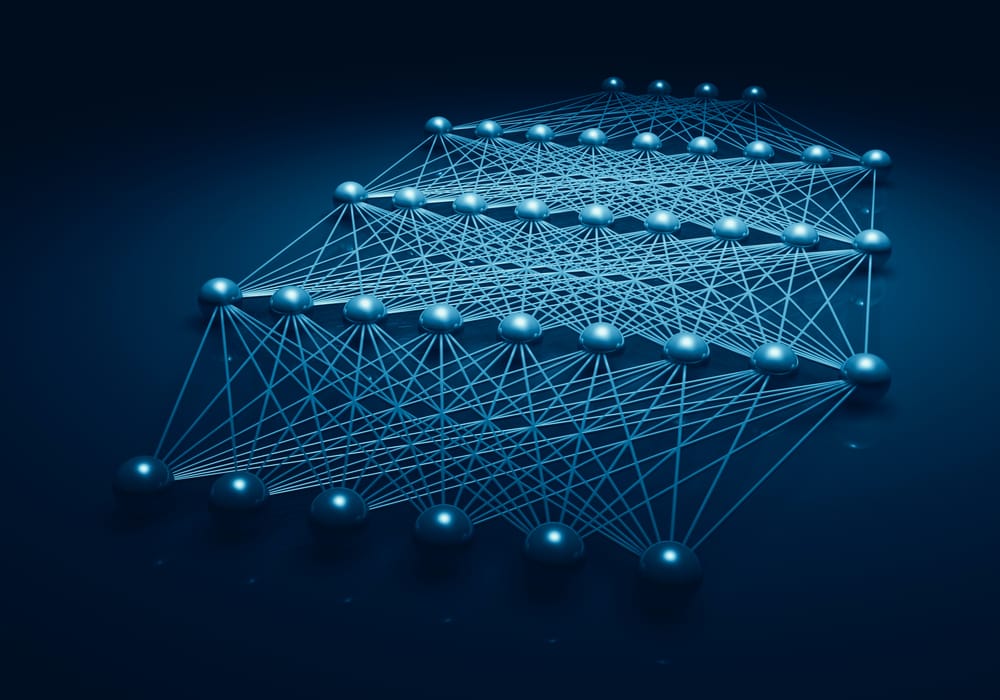
In the field of AI, there are many complex tasks required to evaluate either in the field of Machine learning or deep learning. It is indeed necessary to automate a knowledge processing system in such system. Knowledge representation is one such process which depends on the logical situation and enable a strategy to take a decision in acquiring knowledge. There are many types and levels of knowledge acquired by human in daily life but machines find difficult to interpret all types of knowledge. For such conditions, knowledge representation is used.
In knowledge representation algorithms, AI agents tend to think and they contribute in taking decisions. With the aid of such complex thinking, they are capable to solve the complex problems indulged in real world scenarios that are hard and time consuming for a human being to interpret.
Learn all about AI and its application.
Representation of Knowledge
In AI systems, knowledge is represented in the following manner.
Events:
Events are the occurrence of things in the real world. Anything which happens in real time are considered as the events. It is an important element as it is the initial thing to be considered in knowledge representation.
Object:
Objects are nothing but the facts that are actually true. Such facts can be habitual or a universal truth such as ‘The Sun rises in the East’, ‘Dogs are faithful’ or any facts which holds true in any events.
- Meta-Knowledge: It is those knowledges which are already been acquired either by human brain or machine.
- Knowledge base: It is the core component of the agents acquiring knowledge.
- Performance: It describes about how good the knowledge is acquired and it can be applied to machines.
Categories of knowledge
Knowledge can be categorized into two major types:
- Tacit knowledge
- Explicit knowledge
Tacit knowledge is the knowledge which exists within a human being. It does correspond to informal or implicit type of knowledge. It is quite difficult to articulate formally and is also difficult to communicate and share.
Explicit knowledge is the knowledge which exists outside a human being. It corresponds to formal type of knowledge. It is easier to articulate compared to tacit knowledge and is easier to share, store or even process.
Types of Knowledge Representation
- Declarative Knowledge
- Procedural Knowledge
- Meta Knowledge
- Heuristic Knowledge
- Structural Knowledge
Below is the all types of Knowledge Representation with Examples
Declarative Knowledge
It is the segment of knowledge which stores factual information in a memory and it seem to be static in nature. These can be things or events or processes and the domain of such knowledge find the relation between events or things.
Procedural Knowledge
This knowledge is less general compared to declarative knowledge and is also known called imperative knowledge. It can have the potential to declare the accomplishment of a particular thing. It is generally used by modern mobile robots where they can be planned to attack into a building or perform navigation in a room. If we consider declarative knowledge implanted into a modern robot, they it will be assigned just a map instead of detailed plan of attack into a building.
Meta Knowledge
In the field of AI, the knowledge of pre-defined knowledge is known as meta knowledge. A study of planning, tagging and learning are some of the examples of meta knowledge. This model tends to change with time and utilize a different specification. A knowledge engineer may utilize different forms of meta-knowledge given below:
Accuracy, Applicability, Assessment, Consistency, Completeness, Disambiguation, Justification, Life Span, Purpose, Source, Reliability.
Heuristic Knowledge
This knowledge is also known as Shallow knowledge and it follows the principle of thumb rule. It is very efficient in reasoning process as it solves the problems based on the records of past problems or the problems which are compiled by experts. It provides knowledge based on the experiences it gathered during the past problems.
Structural Knowledge
This is the most basic knowledge used and applied in problem solving. It tries to find out a relationship between concepts and objects.
Let us describe a relationship of the knowledge along with a flowchart.

As we can see, declarative knowledge is represented as describing one and procedural knowledge is represented as doing one. Now one more inference is, declarative knowledge is termed as explicit while procedural knowledge is termed as tacit. If the knowledge can be articulated, it is a declarative knowledge and if cannot be articulated, it is known as procedural knowledge.
Learn what the top AI startups in India are working on.
Schemas
Knowledge representation often provides information about those things which occur very common and make a pattern. Such patterned description is known as schemas. There are various types of schema which are
- Frames– They contain information of all the attributes present in a given object. As for example, the description of a girl includes hair, facial pattern, eyes, etc. are considered as the frames. They represent knowledge of concepts and objects.
- Scripts- They are often used to explain series of events which follow a sequence. For example, a hotel scene. They represent knowledge of events.
- Stereotypes– They used to describe the characteristics present in a people.
- Rule models- In a production system, they describe features which are shared commonly among a set of rules.
Requirements of knowledge Representation
A knowledge representation has the following requirements
- It should have the adequacy or fulfillment to represent all types of knowledge present in the domain. It is also known as representational adequacy.
- It should be capable enough to manipulate the representational structure in order to derive new structures which also should be corresponding to the new knowledge extracted from the old. It is also referred as inferential adequacy.
- It should be able to indulge the additional information into the knowledge structure which can be further used to focus on inference mechanisms in the best possible direction. It is sometimes known as inferential efficiency.
- It should acquire new knowledge with the help of automatic methods rather than relying on human source. This process is known as acquisitional efficiency.
Components of knowledge Representation system
The knowledge representation function contains the following components.
- Perception
- Learning
- KR and Reasoning
- Planning and Execution
Perception helps in extracting the information and can be helpful in telling us the status of AI system. It can detect any irregularity in the system and make us ready to decide whether an AI system has the potentiality of damage or not.
Learning component captures the data which are already sensed by the perception component. Learning component tries to enable the computer to learn just like human instead of always programming it. This component solely tries to focus on how to self-improve the AI system.
KR and reasoning are used in AI to acquire knowledge in the smartest way. It focuses on the behavior of an AI agent and make sure that it more or less behaves like human. It is used to formalize the knowledge in the knowledge base.
Planning and execution try to find the optimal solution of the current state and tries to understand the impact of the same. Now it tries to seek out the solution that the final state holds and then it will try to terminate the entire process with a solution here itself.
The below diagram shows how the process of knowledge representation works.

Approach
Different approaches are used by knowledge representation system. Those are
- Simple relational knowledge
This knowledge is used to store data systematically and in the form of columns. The only thing to know is they contain relation with each other and they very little chances to make an inference which can be later used in inference engines.
| Name | Style | Instrument | Age |
| John | Jazz | Trumpet | 35 |
| Prince | Rock | Guitar | 40 |
| Monty | Rock | Trumpet | 45 |
The above table can give answers to
- Who plays in rock style?
- Who plays trumpet in rock style?
2. Inheritable knowledge
This type of knowledge can be passed on other agents without having a need of learning again. If an AI agent learns something from a human, then it can pass it to other agents and they can inherit the same without learning again.
This type of knowledge is generally obtained from associated objects and tries to prescribe a new structure which extracts all or selective attributes from existing objects. This type of knowledge is indulged in the design hierarchies which is found in physical, functional and process domains. So the parent attributes try to inherit the knowledge within the hierarchy to prescribe to the child elements.
3. Inferential knowledge
It defines the knowledge as a formal logic condition and has a strict rule. The knowledge is extracted from objects by studying the relation between them. If we take a word to make an inference, it will difficult except we take a phrase to get more meaningful insights of that same word. In linguistic, this approach is known as semantics. The new information extracted from the existing information does not require gathering of data from the source but they analyze the existing information in order to generate new knowledge.
4. Procedural knowledge
This knowledge tends to represent control information which uses the knowledge keeps embedded in the knowledge itself. This approach can easily represent heuristic or domain specific knowledge. They are represented as small programs of how to proceed and perform specific things. They may include inferential efficiency but they do not have inferential adequacy or acquisitional efficiency.
Knowledge representation theory is suitable when intelligent behavior solely depends on explicitly represented knowledge. Knowledge representation is not capable to solve anything by itself if a system fails to reason what it has represented explicitly in the mist effective way. Knowledge representation is a study of the information we can extract in a computationally dependable way or investigating the area within the theories of KR hypothesis. If a theory consumes classical first order logic assumptions, then knowledge representation is the basis of this investigation or else it is recommended to explore other theories.
To know more about AI and its various concepts, take a program which covers the subject extensively. Great Learning’s PGP- AIML offers you mentored learning along with industry insights. Visit our website to learn more.





